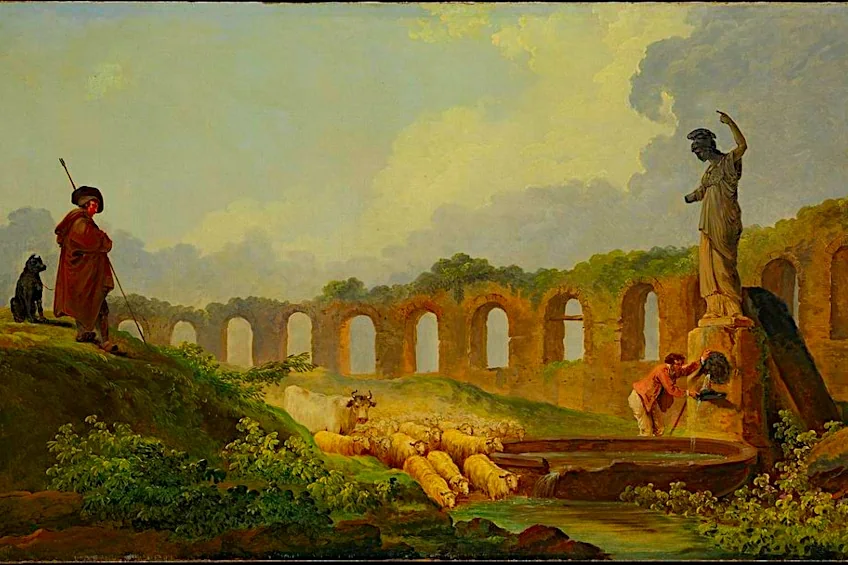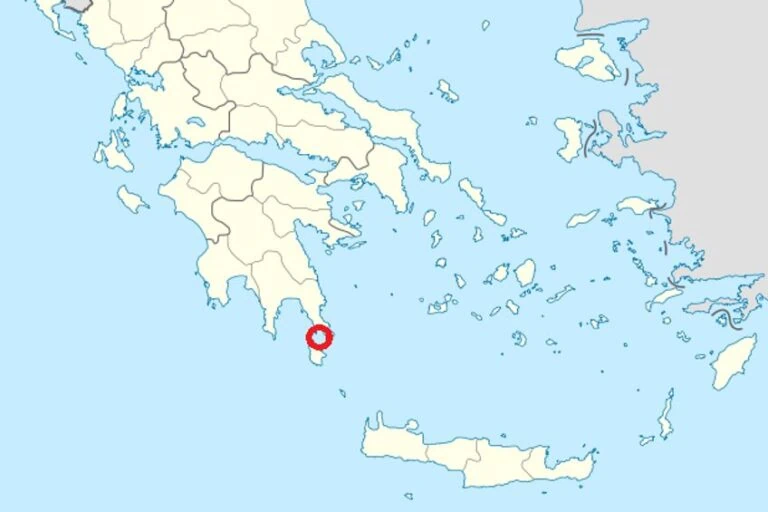Roman Aqueducts – The Hydraulic Architecture of Ancient Rome
Roman aqueducts are some of the most important architectural and technological achievements that the Romans managed to accomplish over the course of their illustrious civilization. This article will explore Roman aqueducts, how they were created and maintained, and what that meant to the people of Rome. So, let’s have a look at Roman aqueducts and see what makes them tick, because these water systems are immensely fascinating architectural feats.
A Look at Roman Aqueducts
Ancient Rome is well-known for a number of architectural advances that it developed or elaborated on to an extraordinary degree. The Romans developed a form of concrete that has managed to survive until this day, they elaborated on arch and column designs and used them to produce far larger structures than ever before, and they created vast road networks that place Rome at its center so that all trade would eventually converge in that ancient city. So, there are many great architectural achievements that the Romans introduced to the world, and the Roman versions of aqueducts are another of those great developments.
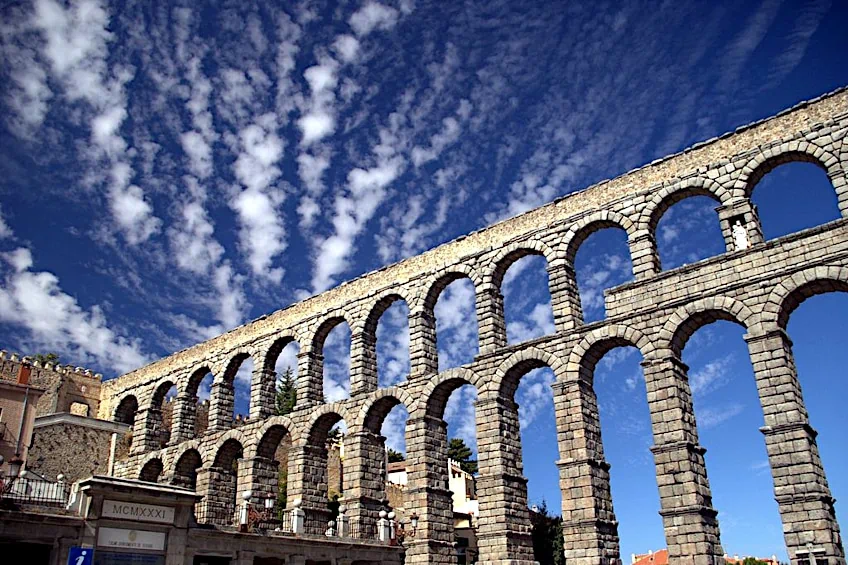 The Roman aqueduct of Segovia; Palimpodio, CC BY-SA 3.0 ES, via Wikimedia Commons
The Roman aqueduct of Segovia; Palimpodio, CC BY-SA 3.0 ES, via Wikimedia Commons
But what is an aqueduct? Well, an aqueduct, for those unfamiliar with the term, is a specially designed structure that is built to transport water from sources into an area that may not otherwise have its own water source. So, there may be a river a few kilometers from a village and so an aqueduct would be built to allow the water to flow directly from that river into the village without the need for repeated trips to that village.
In the modern era, the term “aqueduct” can refer to any number of architectural features that transport water towards or away from people. So, it can be pipes or ditches that aid in the transport of water around human civilization. Our cities are entirely constructed around systems like this because we require large amounts of water in our daily lives to survive and thrive.
The usefulness of systems like this does not necessarily become all that apparent until one truly interrogates it. This is why Ancient Roman aqueducts are such an important architectural feat that this civilization managed to develop into the grand structures that they produced. In fact, it was through the use of aqueducts that the city of Rome was able to flourish and grow in the way that it did.
Roman aqueducts were used to supply water to Rome, and at their ancient height, these aqueducts were able to provide water to over a million people. The Romans constructed eleven major aqueducts that specifically served as aqueducts in Rome. These eleven structures are some of the most amazing structures that the Romans ever built yet they tend to receive very little attention when compared to some other architectural achievements that Rome managed to accomplish.
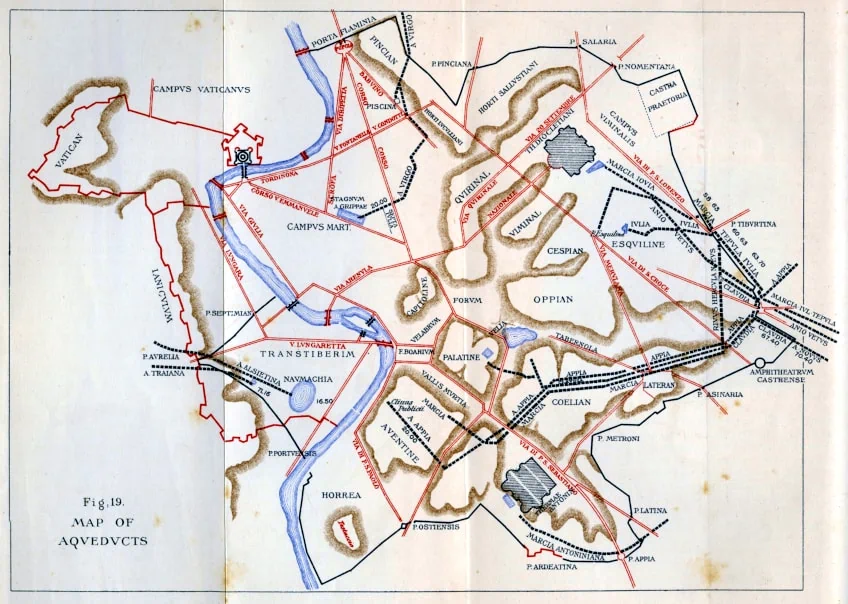 Map showing the aqueducts of the city of ancient Rome; Rodolfo Lanciani, Public domain, via Wikimedia Commons
Map showing the aqueducts of the city of ancient Rome; Rodolfo Lanciani, Public domain, via Wikimedia Commons
We are going to spend the rest of this article examining many of the most fascinating aspects of these aqueducts in Rome and beyond. How were they built, their functioning, and their significance to the Roman people will all be explored. Keep reading to learn a lot more.
The Construction of Roman Aqueducts
Aqueducts, once they were first created, became immensely important to the continuation of Rome. The movement of water into their cities was necessary to aid in the growth and prosperity of those within these urban hubs. So, aqueduct building programs became something both socially and politically important for the development of Rome. The immediate civic pride that grew within Roman civilians when they had a water source near their homes in a way that other civilizations could scarcely dream of meant that Roman politicians were incentivized to ensure that the grand aqueduct project continued to thrive.
Roman aqueducts needed to be designed in such a way that they would be able to do what they needed to do for every single citizen in Rome. But how do aqueducts work in the first place? They work by being a long path for the water to follow that is constructed on a very slight gradient to allow water to gravitationally travel extraordinarily long distances without stopping anywhere.
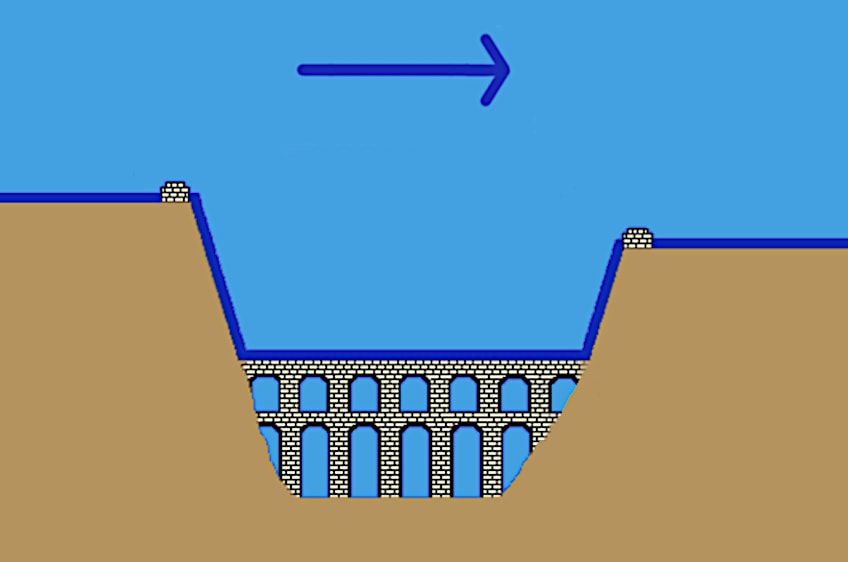 Diagram showing the siphon aqueduct design used for deep valleys; No machine-readable author provided. DieBuche assumed (based on copyright claims)., CC BY-SA 3.0, via Wikimedia Commons
Diagram showing the siphon aqueduct design used for deep valleys; No machine-readable author provided. DieBuche assumed (based on copyright claims)., CC BY-SA 3.0, via Wikimedia Commons
The water pressure could not be too high because that could erode the aqueducts themselves, and so the water may not have moved at the kind of speeds we’d want to see today, it certainly was revolutionary for their time though.
The Engineering Techniques Used to Build Roman Aqueducts
Roman aqueducts were an architectural wonder of the world. Designing and implementing them was not a particularly easy thing to do, and it required staggering levels of hard work. The areas in which aqueducts were built needed to be carefully planned out to ensure that the structure as a whole would be as economically constructed as possible and that the water wouldn’t dry up at any point.
Roman aqueducts relied on gravity alone to ensure that the water made its way through the world and toward Rome (and other Roman cities). Because they made use of gravity alone, they needed to be designed in such a way that they maintained a constant gradient for many kilometers at a time so that the water could naturally flow toward its final spot. These Ancient Roman aqueducts had to be meticulously planned and implemented.
Some of the most interesting facts about Roman aqueducts are that they were designed alongside sluice gates (which are gateways to stop and start the flow of water), distribution tanks (to collect the water and store it for later use), and stopcocks (which are valves that can be used to control water pressure). These kinds of technologies and engineering feats needed to be accomplished so that aqueducts in Rome could thrive.
 Bronze Roman plug insert stop valve; Le plombier du désert, CC BY-SA 4.0, via Wikimedia Commons
Bronze Roman plug insert stop valve; Le plombier du désert, CC BY-SA 4.0, via Wikimedia Commons
The Materials Used in Roman Aqueduct Construction
Ancient Roman aqueducts were constructed out of a number of different materials over the course of their existence, but they were generally made from various types of stone and/or brick. They were also often combined with concrete, but many instances of aqueducts did not use any mortar at all and were instead comprised of stone slabs that were slotted into each other with such precision that no cement was necessary at all.
While these were some of the standard materials used for much of the long exterior aqueducts, these systems were also connected to many local water-gathering locations in the cities. These divergences from the main aqueducts were often done through the use of ceramic, lead, or other materials that could allow for more precise manipulation of the water that had now reached the city itself.
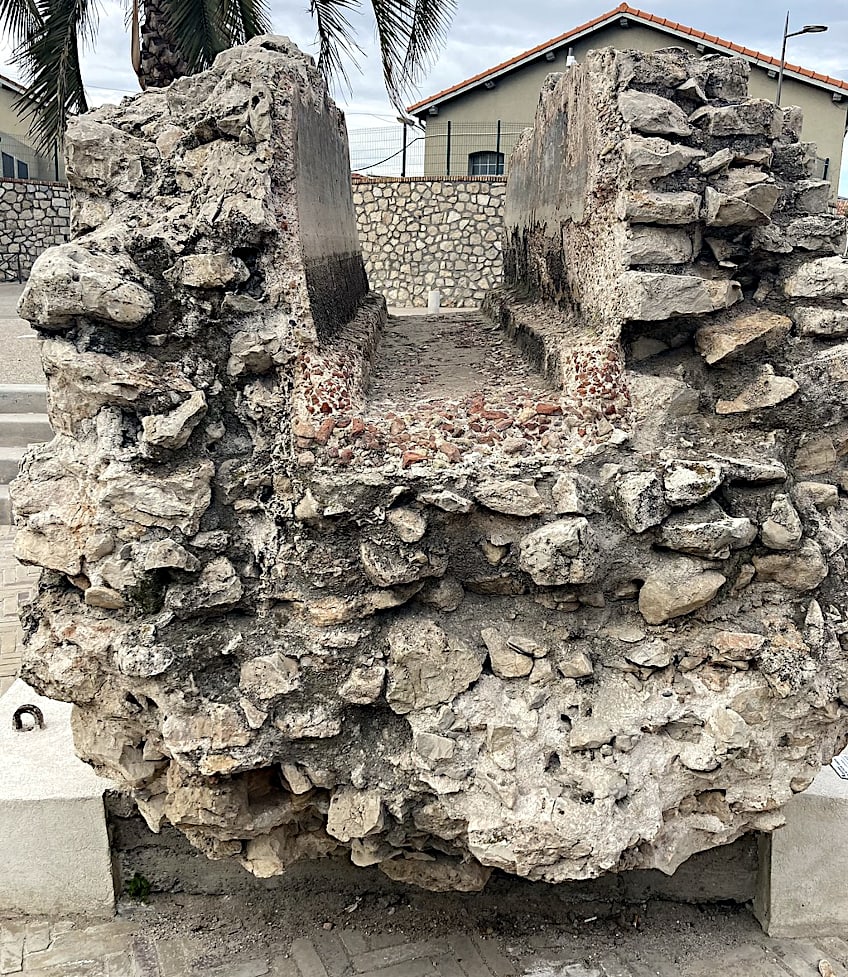 Segment of Roman aqueduct in Antibes, France showing its method of construction; Dr Dobeaucoup, CC BY-SA 4.0, via Wikimedia Commons
Segment of Roman aqueduct in Antibes, France showing its method of construction; Dr Dobeaucoup, CC BY-SA 4.0, via Wikimedia Commons
Functioning of Roman Aqueducts
Ancient Roman aqueducts, as has been explored, may have been a technological and architectural marvel of the era, but simply building a structure like this is only half the battle. Some of the most interesting facts about Roman aqueducts have to do with how they were developed and constructed in the first place, but there’s a lot more to it than just that.
These important pieces of civic infrastructure needed to be maintained, and this was done through the use of various water management groups within Ancient Rome. These organizations were not permanent in the early days, but Augustus created a new position to maintain the water supply to the empire, and it was one of the most important positions in the empire.
How Water Was Collected and Transported Through Roman Aqueducts
What were aqueducts used for? This may seem to have a simple answer that has already been explored, but what were they actually used for and how did they work in the way that they did? Well, Roman aqueducts typically started with some kind of a water source, such as a spring or river that was a long way from the city that needed the water that would come from these aqueducts. There would then be an extremely gradual slope that ran the entire length of the aqueduct so that the water could then flow through and toward the city.
 Terracotta Pipes of the Peisistratid Aqueduct; Sharon Mollerus, CC BY 2.0, via Wikimedia Commons
Terracotta Pipes of the Peisistratid Aqueduct; Sharon Mollerus, CC BY 2.0, via Wikimedia Commons
There were many divergences along the way as the water was siphoned off and transported into special distribution tanks along the aqueduct’s route. This meant that aqueducts were not solely used for the cities, but for the lands external to the cities too. This was important because the water needed to be distributed to everyone who needed it. This is why catchment systems were especially important for collecting and storing the water that had been transported such a long distance.
The Water Distribution Systems in Ancient Rome
The water that was collected then needed to be distributed. Ancient Roman aqueducts moved their way through the empire and allowed various communities to make use of the water. Before the advent of aqueducts in the empire, Romans found water like practically every other civilization around then. They would make use of local water sources like rivers and springs, or they’d find groundwater stores and access them through wells. There was also the capturing of rainwater that was prominently used, but these forms of water collection became far less important once Roman aqueducts developed.
The aqueducts specifically within Rome would need to make use of distribution locations but also the use of grants to minimize the potential theft of water. Rome was a highly organized culture, and so water grants placed within an individual’s name needed to be negotiated between the individual and the state. This meant that the water that was collected was not wasted and was instead properly distributed among the people.
The purely mechanical and engineering-oriented solutions to water distribution within a city are one thing, but it’s another thing entirely when it comes to the political implications of water usage. These kinds of issues persist to this day around the world, as the securing of abundant water sources is a point of contention in many societies. Water is needed for life to thrive after all, and so whoever has the water, has a better life.
How Roman Aqueducts Were Maintained and Kept Operational
Because water is such an integral aspect of life on the planet, and that includes humans, the Roman aqueducts that supplied the people with the water they needed to survive needed to be properly maintained. These aqueducts, thanks to their immense importance, needed to be regulated and controlled through laws and customs. Not only that, but they needed to be carefully planned out long before they were ever constructed.
The beginning of the construction of a Roman aqueduct required a lot of political movement. The location needed to be viable, it needed to respect the water rights of others, and there had to be an economical way in which the aqueduct could be built in the first place. If an aqueduct was going to be forced to wind its way through difficult terrain, then plans would likely need to be changed.
Once a Roman aqueduct was constructed, maintenance did not end. The construction of these structures may have been rigorous, but all things made by people eventually crumble. So, there needed to be regular checkups to ensure that there was never a full closure of any of the aqueducts as the full closure of a water system can have damaging effects on the livelihoods of the people. This was why routine maintenance was necessary.
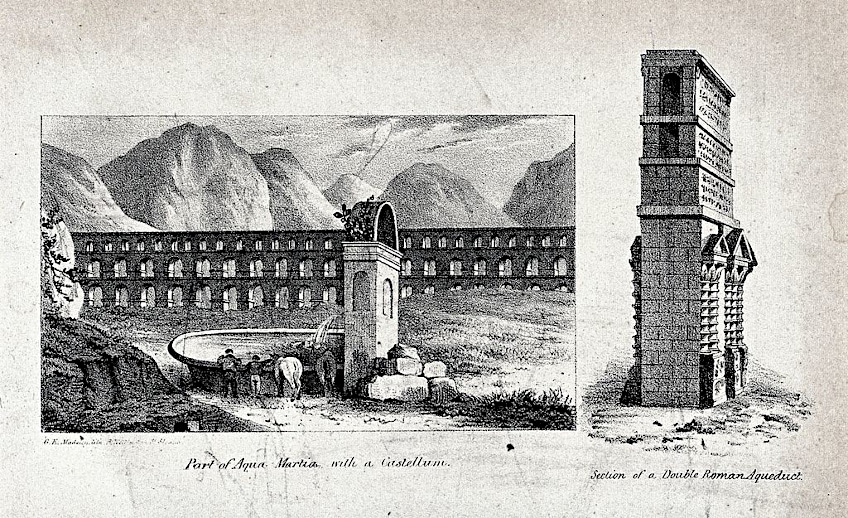 Illustration depicting the design of a Roman aqueduct and fountain; See page for author, CC BY 4.0, via Wikimedia Commons
Illustration depicting the design of a Roman aqueduct and fountain; See page for author, CC BY 4.0, via Wikimedia Commons
The maintenance of Roman aqueducts involved the use of patrol groups that would move up and down the aqueducts to determine whether there had been any accidental or purposeful damage to any part of the structure as well as clearing away algae, debris, and any other water-bound issues that could have caused issues. Any leaks needed to be immediately reported and fixed. Roman aqueducts could not afford to be stopped.
The Significance of Roman Aqueducts
Roman aqueducts were an immensely important part of the functioning of the Roman Empire as a whole. The earliest one was constructed as early as 312 BCE, but it was only the first of the eleven major aqueducts in Rome that supplied the city with the water it needed to grow. These eleven major aqueducts allowed Rome to prosper in many ways, and the economy and power of the empire were able to grow along with the increased water supply.
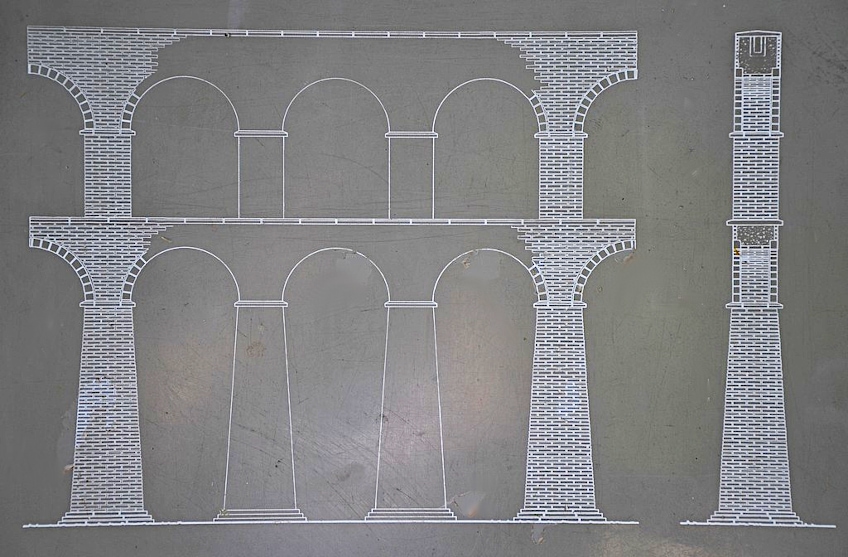 Plan showing the arch construction of the aqueduct built by Roman soldiers after 70 CE in Mainz, Germany; Carole Raddato from FRANKFURT, Germany, CC BY-SA 2.0, via Wikimedia Commons
Plan showing the arch construction of the aqueduct built by Roman soldiers after 70 CE in Mainz, Germany; Carole Raddato from FRANKFURT, Germany, CC BY-SA 2.0, via Wikimedia Commons
The aqueducts in Rome were actually so impressive that many other cities within the Roman Empire decided to produce their own aqueducts to attempt to ensure that they too could grow and develop at the same rate as Rome itself. These aqueducts would also go on to provide Roman citizens with a far higher quality of life than their contemporaries.
However, because of the importance of Roman aqueducts, they were also important strategic sites that could be targeted by enemies. For instance, when the Ostrogoths attacked Rome in 537, they destroyed some of the aqueduct lines that provided the city with the water it needed. So, the aqueducts, despite being such important structures, were also susceptible to many problems.
The Economic Impact of Roman Aqueducts in Ancient Rome
While the Roman aqueducts could potentially be destroyed by those who would do Rome harm, the benefits of a water distribution system like this massively outweighed any potential downsides. The population within Rome obviously needed water, but these aqueducts supplied water to far more than just the city itself. In fact, these aqueducts were used to provide farmlands with water too.
Sometimes there were unlicensed diversions of water in rural areas, but this was typically ignored because it was beneficial to the Roman economy. If agriculture, which comprised the majority of the Roman Empire’s population, needed water to produce the crops necessary to maintain a civilization, then these locations needed to receive as much water as possible.
If water became expensive, then food would become expensive. Something like that would threaten to harm the complex economy that Rome had developed, but agriculture is not the only high-water use industry. Other jobs like certain forms of mining, clothing production, and several others made extensive use of water. This meant that these kinds of jobs could both exist and thrive within Rome as the water was not likely to dry up any time soon. Water was necessary for the Roman economy, so the people received the water they needed.
The Social Impact of Roman Aqueducts on Public Health and Daily Life
Not only were Roman aqueducts important for the economy, but they were also important for the people. One of the most important things about Ancient Rome was that, unlike many other city-based societies at the time, it had managed to improve the overall health, hygiene, and welfare of the citizens within it. There are the obvious benefits of a constant stream of flowing water, such as the ability to have clean drinking water, but it also meant that sewer systems and bathhouses could be constructed.
 “Bauletto” type fountains connected to the aqueduct system in Rome from the 1st Century CE onwards; Dennis Jarvis from Halifax, Canada, CC BY-SA 2.0, via Wikimedia Commons
“Bauletto” type fountains connected to the aqueduct system in Rome from the 1st Century CE onwards; Dennis Jarvis from Halifax, Canada, CC BY-SA 2.0, via Wikimedia Commons
Aqueducts allowed for waste to be carried away and for clean water to be brought to the city, and while much of the water did go towards drinking and economic uses, it also flowed into the many Roman bathhouses. These bathhouses provided people with a place to clean themselves while also not having to worry about bathing in stagnant and possibly diseased water. The water was fresh and clean, and this meant that it could be used to improve the health of the people.
The Roman aqueducts were, in general, very good for public health. However, there were some issues, such as the fact that lead pipes were sometimes used as drinking directly from a lead source is generally not the best idea. However, the Romans made use of other materials, like ceramic, for many of their distribution networks and so contamination was, thankfully, kept to a minimum.
The Legacy of Roman Aqueducts in the Modern Era
We tend to ignore infrastructure when it comes to the architectural achievements of our world, but we really shouldn’t. Infrastructure is a fascinating field and one that has allowed us to grow as a civilization in ways that would have astounded our oldest ancestors. There is often a focus, when it comes to architecture, to look at the majestic buildings we have constructed like cathedrals, palaces, and skyscrapers, but infrastructure projects are often more important for daily life.
We only really notice infrastructure when it breaks. That is, perhaps, the most beautiful thing about it. When it works, you forget it’s there. When a road is working just fine, no one says a word, but as soon as It’s filled with potholes, it becomes an issue. The same is true of Roman aqueducts. These marvels of infrastructure engineering allowed the Roman Empire to grow into what it would later become, and none of that would have been possible without the aqueducts, roads, and bridges that the Romans constructed.
It’s true that temples and palaces and other grand structures are gorgeous sights to behold, but are they anywhere near as useful as the technology we still use to this day that allows us to provide our homes with running water? The legacy of Roman aqueducts lies in their modern influence and implementation. Where would we be today if we still didn’t have running water?
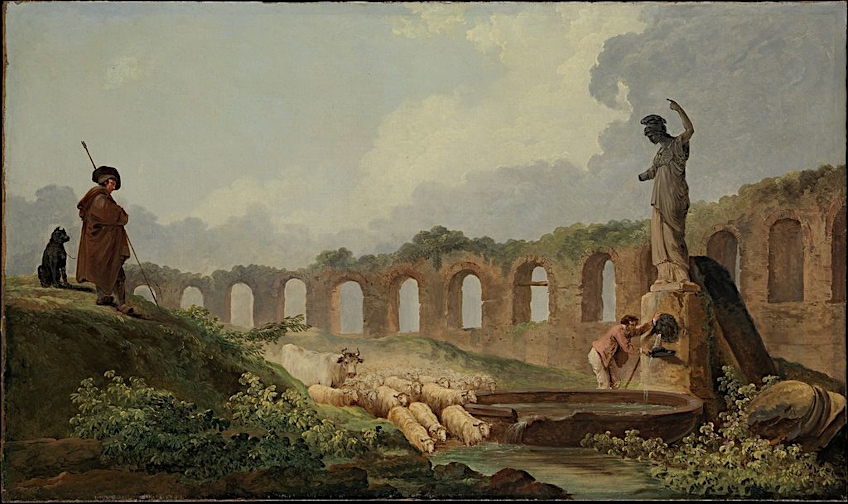 Aqueduct in Ruins by Hubert Robert (18th Century); Hubert Robert, CC0, via Wikimedia Commons
Aqueduct in Ruins by Hubert Robert (18th Century); Hubert Robert, CC0, via Wikimedia Commons
Examples of Famous Roman Aqueducts
Now that we have had a good and long look at Roman aqueducts in general, let’s examine a few examples of these structures. Perhaps we will even uncover a select few facts about Roman aqueducts too. So, keep reading to learn a bit more about some specific examples of Roman aqueducts.
Aqua Appia (312 BCE) in Rome
| Architect | Gaius Plautius Venox (4th century BCE) and Appius Claudius Caecus (312 – 279 BCE) |
| Date Constructed | 312 BCE |
| Materials Used | Bedrock and stone |
| Location | Rome, Italy |
Aqua Appia was the very first Roman aqueduct ever constructed, and it was built under the orders of Gaius Plautius Venox and Appius Claudius Caecus in 312 BCE. The purpose of this first aqueduct was to provide Rome’s growing population with the water that it would need to keep growing.
 Map showing the length of the Aqua Appia in Rome (published 1886); ? / Coldeel, Public domain, via Wikimedia Commons
Map showing the length of the Aqua Appia in Rome (published 1886); ? / Coldeel, Public domain, via Wikimedia Commons
However, in comparison to the aqueducts that would come later, Aqua Appia was mostly rough-hewn and more of a test run than an actual aqueduct as they would later become known. However, it was one of the first great architectural feats that Ancient Rome managed to accomplish, but there would be far more to come.
Pont du Gard (Around 40 – 60 CE) in Nîmes
| Architect | Unknown |
| Date Constructed | Around 40 – 60 CE |
| Materials Used | Limestone |
| Location | Nîmes, France |
Pont du Gard is, quite possibly, the most famous of all the Roman aqueducts. This one is also not located in Italy at all, but rather in France. This aqueduct bridge was designed to carry water to the Roman colony of Nemausus, which would later be known as Nîmes. This aqueduct is especially famous because it is not only an aqueduct but also a bridge that crosses over the river Gardon.
 Pont du Gard; Krzysztof Golik, CC BY-SA 4.0, via Wikimedia Commons
Pont du Gard; Krzysztof Golik, CC BY-SA 4.0, via Wikimedia Commons
The famous aqueduct bridge spans the breadth of the river through a series of three-tiered arches. The bridge as a whole is 48.8 m (or 160 ft) tall and one of the most interesting facts about this aqueduct bridge is that it uses no concrete in its bridge component. The stones are simply fitted together so tightly that they have remained in place for nearly two millennia.
Aqueduct of Segovia (1st Century CE) in Segovia
| Architect | Unknown |
| Date Constructed | 1st Century CE |
| Materials Used | Granite |
| Location | Segovia, Spain |
The Aqueduct of Segovia is a Roman aqueduct that runs nearly 15 km (or 9.3 mi) from its source in the mountains to Segovia, and to show the longevity of these structures, the aqueduct was actually in use until 1973. This makes it one of the longest Roman aqueducts in the world and a phenomenal piece of architecture.
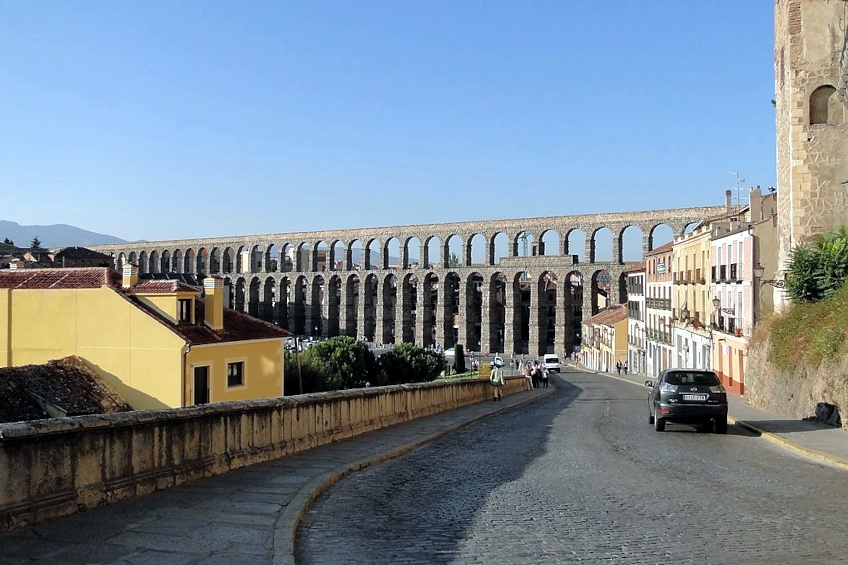 Aqueduct of Segovia; Bernard Gagnon, CC BY-SA 3.0, via Wikimedia Commons
Aqueduct of Segovia; Bernard Gagnon, CC BY-SA 3.0, via Wikimedia Commons
The water from the aqueduct would eventually reach the city and remain within a large tank before being channeled through to other locations within the city. However, we have very little information about those who constructed or designed this particular aqueduct, and even the date cannot be conclusively determined.
Aqua Alexandrina (Around 226 CE) in Rome
| Architect | Unknown |
| Date Constructed | Around 226 CE |
| Materials Used | Concrete and brick |
| Location | Rome, Italy |
Aqua Alexandrina is an incredibly lengthy Roman aqueduct, and it sits at 22.4 km (or 13.9 mi) it carried water from Pantano Borghese to the Baths of Alexander. It eventually fell into disuse in the 8th century. One of the most amazing things about this particular aqueduct is that the first 6.4 km of its full length is entirely underground, and a later 2.4 km carries it over a valley.
 Aqua Alexandrina; Chris 73, CC BY-SA 4.0, via Wikimedia Commons
Aqua Alexandrina; Chris 73, CC BY-SA 4.0, via Wikimedia Commons
This is an utterly massive aqueduct, one of the longest in the world, and one of the great feats of architecture in the ancient world. The aqueduct would eventually cease its actual function, but the structure would remain behind far longer than its use.
Aqueduct of Valens (Around 368 CE) in Istanbul
| Architect | Unknown |
| Date Constructed | Around 368 CE |
| Materials Used | Stone and brick |
| Location | Istanbul, Turkey |
The Aqueduct of Valens was a massive aqueduct of which only 971 m (or 603 ft) remains. It was constructed to supply Constantinople with the water it needed, and this became especially integral after the Western Roman Empire fell and Constantinople, or modern-day Istanbul, became the capital city of the Byzantine Empire.
When the city was eventually attacked and taken by Mehmed the Conqueror, he ordered the aqueduct repaired and then used it to supply the imperial palaces in the city. It remained in use until the 18th century
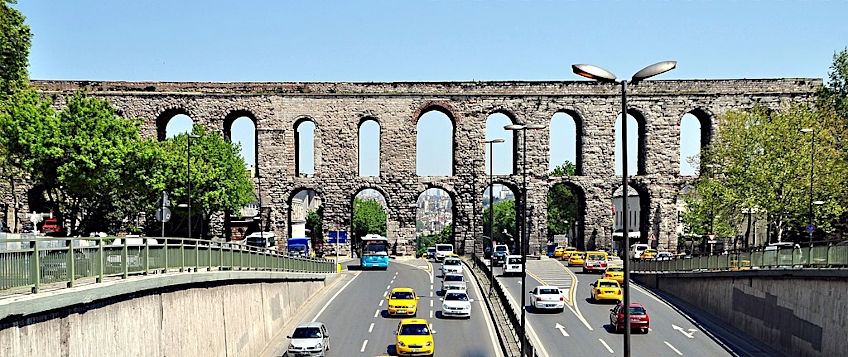 Aqueduct of Valens; Lowcarb23, CC BY-SA 4.0, via Wikimedia Commons
Aqueduct of Valens; Lowcarb23, CC BY-SA 4.0, via Wikimedia Commons
We have come to the end of our discussion about Roman aqueducts. We have examined the construction, maintenance, and uses of aqueducts in Rome and the surrounding areas, and how this fairly simple idea was implemented to such an extraordinary degree by the Romans that aqueducts have become one of the defining architectural achievements of the Roman Empire. All that’s left for us to do is wish you a great day/week/month ahead!
Frequently Asked Questions
What Is an Aqueduct?
An aqueduct is a structure that is used to transport water over long distances. These structures make use of a sloped design so that gravity can move the water from sources, like rivers or springs, to cities or towns that need the water. The Romans did not invent them, but they did produce some of the most famous versions of these structures.
What Were Aqueducts Used For?
Aqueducts were used to transport water, but the need to transport water was for various reasons. It was necessary to transport water to agricultural centers so that food could be grown, to high-water usage industries within cities and towns so that those industries could continue to function, to bathhouses for hygiene purposes, and, of course, to regular people so that they had water to drink.
How Do Aqueducts Work?
The basic mechanic behind an aqueduct was gravity. Aqueducts were designed with a slight slope throughout their construction, so that the water could move over long distances and make its way into the cities where the water could be used. This is a rather simple and elegant, albeit architecturally complex, solution to the water needs that people have had over the course of their daily lives.

I am deeply passionate about history and am constantly fascinated by the rich and complex stories of the past. As the editor-in-chief of learning-history.com, I have the opportunity to share this passion with a wide audience through the creation and distribution of engaging and informative content about historical events, persons, and cultures. Whether it’s through writing articles and blog posts or creating videos or podcasts, I strive to bring the past to life in a way that is both accurate and enjoyable. My expertise in history, combined with my strong writing and communication skills, allows me to effectively communicate complex historical concepts and make them accessible and interesting to a wide range of readers. I am truly grateful for the opportunity to share my love of history with others through my work on learning-history.com.

